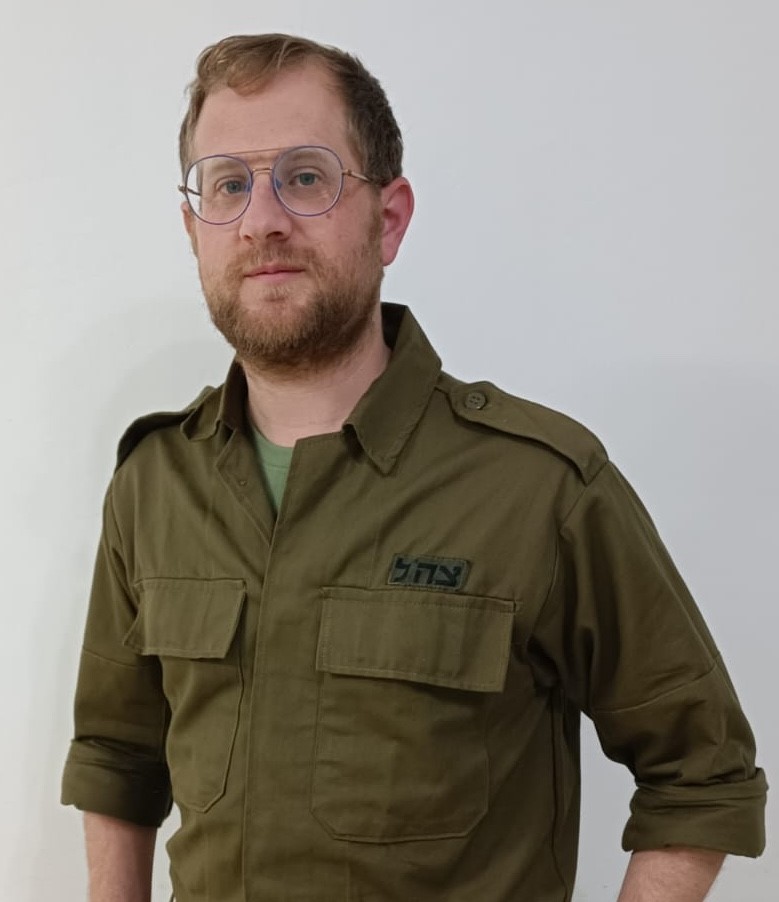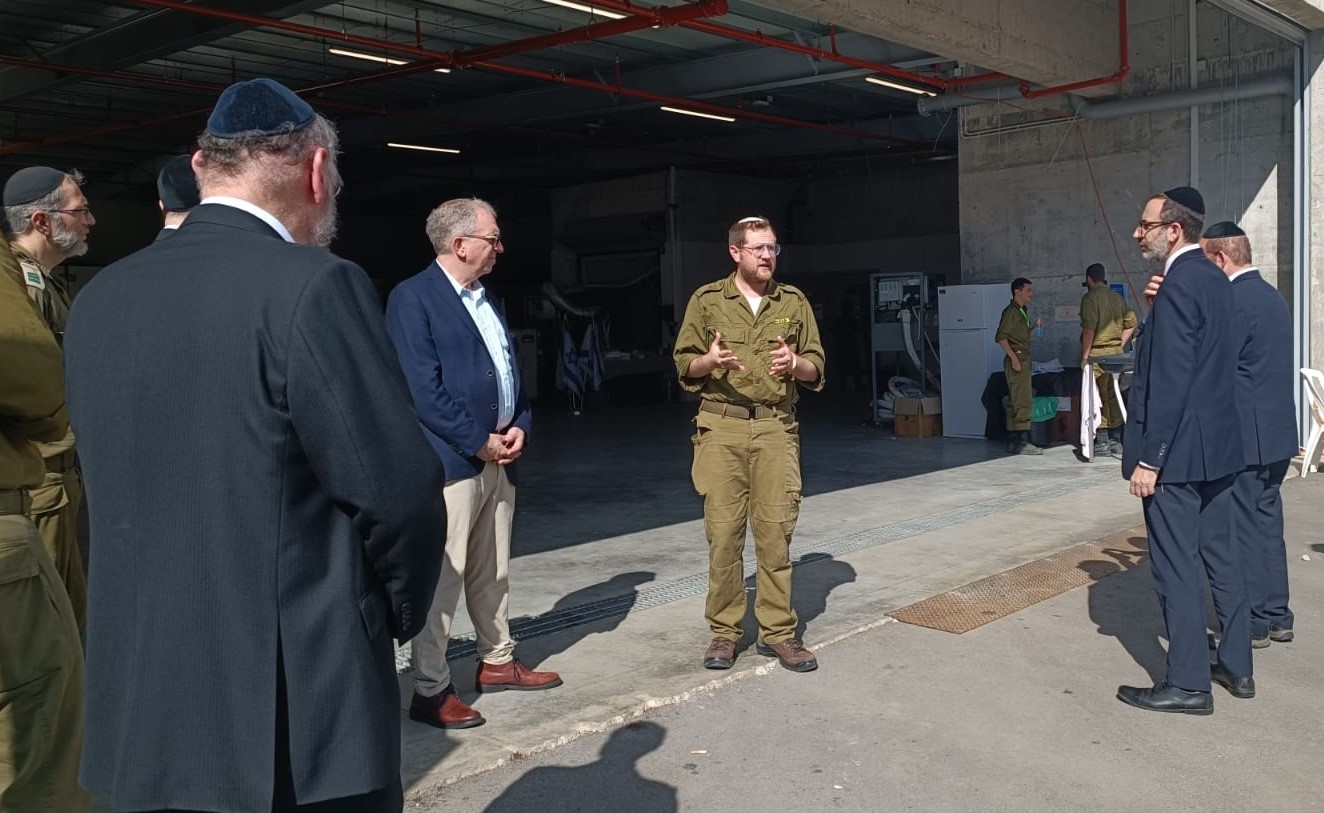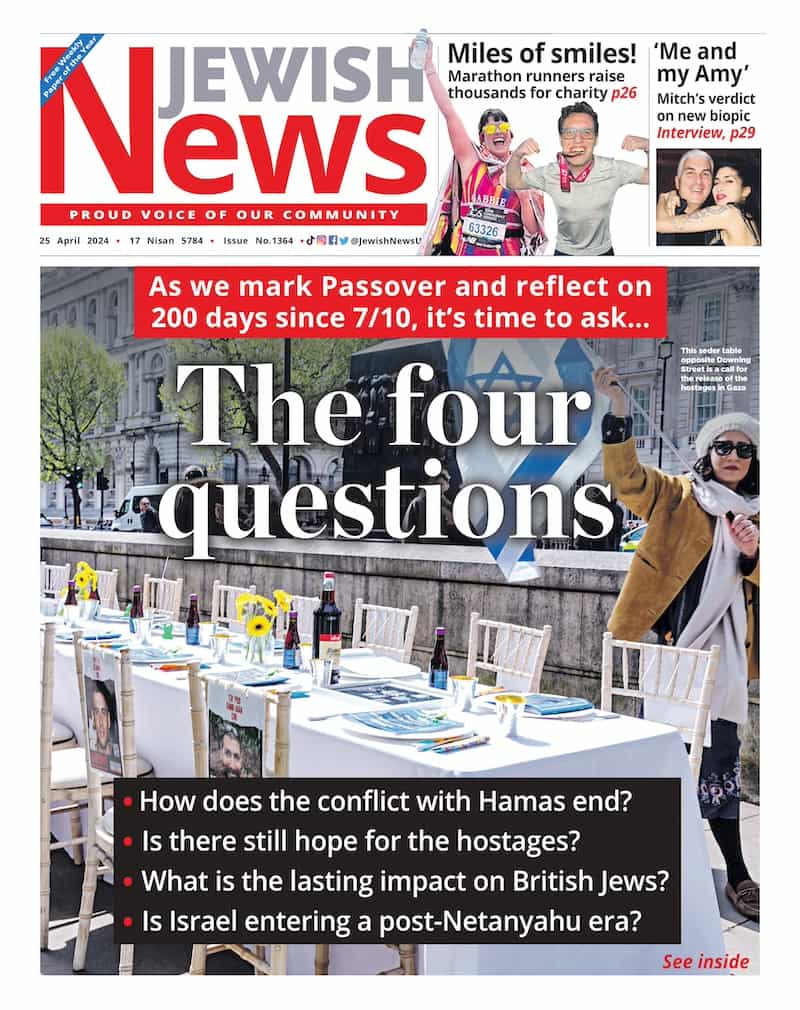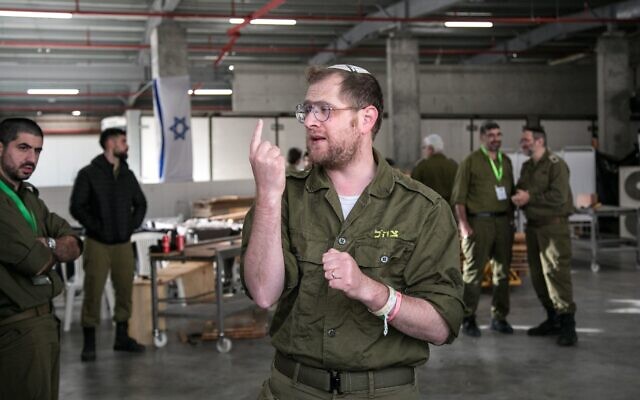Former Mill Hill East rabbi preparing hundreds of Israeli terror dead for burial
TRIGGER WARNING: Rabbi Bentzi Mann is carrying out 'holy work' - identifying the bodies of murdered Israeli citizens and soldiers as part of the IDF rabbinate
Jenni Frazer is a freelance journalist
After a long day’s work, Bentzi Mann was happy to come home to Rehovot and play hide and seek with his three-year-old son. But when the little boy, hiding, covered himself with a sheet, Rabbi Mann burst into tears.
Since the Hamas massacres in southern Israel on Simchat Torah, Bentzi Mann, former rabbi of the Mill Hill East community in London, has been serving Israel in a way few others can — by being part of the Chevra Kadisha group of the IDF rabbinate, preparing the hundreds of dead for burial.
Rabbi Mann, Israeli-born to American parents, spent four years in London, working in Mill Hill East and teaching in JFS. He and his wife Michal returned to Israel in August 2022 and he took up a post as director of the schools department for World Mizrachi.
He had spent his regular army service, which concluded in 2009, with the IDF rabbinate. “Since then, when I was called on to do reserve duty, I had a very different role — it was kashering kitchens for Pesach”.
Once the sirens began to sound on what Israelis now refer to as “Black Shabbat” — 7 October — Rabbi Mann knew he would be doing some sort of intensive reserve duty, but he had no idea what it would be.

He was sent to the Shura army base, which is the main reception centre in Israel for fallen soldiers. And those who work at Shura in “normal” times do have a level of training. But once the war began, Shura was receiving hundreds of bodies, both soldiers and civilians — and no-one, Rabbi Mann says “could have imagined this scale of tragedy.”
It is apparent that events were moving so fast in those first awful days that almost no-one was fully prepared. But within the rabbinate, says Rabbi Mann, there is a “resilience unit”, some of whose members have experience going back to the Second Lebanon War and even as far back as the Yom Kippur War. These people were able to guide and support Rabbi Mann and his colleagues as the numbers of bodies being brought to Shura rose — and continued to rise.
Jewish religious laws surrounding the preparation of a body for burial are well established. But because of the sheer volume of the bodies arriving at the base, extra meticulous care was taken “so that no mistakes were made and we didn’t bury the wrong person in the wrong grave”.
Bodies of soldiers and civilians were arriving “by the truckload”, and one of Rabbi Mann’s first tasks was to help unload the trucks. Many of the bodies, the rabbi said, “were in terrible condition”. He and his colleagues began to learn if a body was broken up or not by the weight of the body bags they were unloading.
“Different people had different tasks. For the first four or five days, I was working 18 hours straight. The chief rabbi of the IDF was basically awake 24/7, because he had to sign off on every identification. He was the end of the chain, if you like. In the beginning we had 80 funerals in one day”.

There were four major ways of identifying a body, Rabbi Mann said. “The first is personal identification, it’s a proper process where you have witnesses testifying to a Bet Din, we know this person, this is our friend. The next stage is forensic, where we go by fingerprints”. Many bodies were identified in this way by referring to the IDF fingerprint database, a directory of fingerprints taken when someone enrols in the army.
Tragically, however, some bodies were brought in without hands. The next stage of identification is through teeth; and then there is DNA matching.
But even those methods are not infallible. Rabbi Mann saw a number of bodies where the person had been beheaded, and in one case he worked on, “his head was found two weeks after his body was buried.”
Because “you never know when or whether you are going to find the missing parts of a body”, in such cases the funerals take place, but the grave is not fully sealed so that if it is possible, the missing parts can be added. DNA tests are routinely done on even the smallest body part to ensure that the correct part is buried with the rest of the person.
After a while Rabbi Mann and his co-workers began to recognise those who had been murdered at the Supernova music festival, because of their clothing. “It was different with soldiers — often they would be wearing uniform and sometimes you could even see their names still on their tunic. With civilians — and, of course, the kids — it was a different story.”
It’s unimaginable how this work must have affected the mental health of Rabbi Mann and his colleagues. He recounts how World Mizrachi staff told him they were going to recite a “Mi Shebeirach” prayer (a prayer for healing) for him. At first he told them that he didn’t need it because he wasn’t being sent to Lebanon or to Gaza, but then he understood that the prayers would be for “refuah”, or recovery, and for “nefesh”, soul. “That’s for mental health, and it’s not easy.”
The army put together a team of civilian social workers and psychologists, who held frequent group and individual sessions with the Chevra Kadisha rabbis. “A few of my friends couldn’t take it any more and they dropped out. I have a friend who went to see a psychologist in the second week, and after 20 minutes the psychologist said, I’m sorry, you’re going to have to find someone else, I can’t help you — the descriptions of what you are doing are too much for me to handle”.
Rabbi Mann himself won’t pretend he is completely fine, telling Jewish News that he isn’t sleeping well and that his wife is “on my case, asking if I am all right”. In the first few days of working at Shura, he couldn’t rid himself of the smell of the bodies. “I had three N95 [face] masks and special minty drops, and it still wasn’t enough. I came home and showered once, and then twice — and the smell was still with me, I thought it was a physical smell. Then I realised the smell was in my head”.
This is when he talks about his tears when his three-year-old was hiding under a sheet. “It’s not something I thought would ever happen to me. But I think I’m fine. I’m getting a lot of support”.
In the last couple of weeks the volume of the operation has decreased a little and Rabbi Mann and his colleagues are no longer working flat out, instead going in to Shura on a shift basis and being encouraged to find time to be with their families.
“There are certain things which are life-changing”, Rabbi Mann observes. For his next reserve duty stint, he says, “I would be happy to go back to also kashering kitchens — but now that I have reached a certain level of knowledge, it would be a shame not to utilise that level of expertise”. The clear sense is that he would rather not have acquired it — but he is carrying out what he terms “holy work” in the best way he can.

Thank you for helping to make Jewish News the leading source of news and opinion for the UK Jewish community. Today we're asking for your invaluable help to continue putting our community first in everything we do.
For as little as £5 a month you can help sustain the vital work we do in celebrating and standing up for Jewish life in Britain.
Jewish News holds our community together and keeps us connected. Like a synagogue, it’s where people turn to feel part of something bigger. It also proudly shows the rest of Britain the vibrancy and rich culture of modern Jewish life.
You can make a quick and easy one-off or monthly contribution of £5, £10, £20 or any other sum you’re comfortable with.
100% of your donation will help us continue celebrating our community, in all its dynamic diversity...
Engaging
Being a community platform means so much more than producing a newspaper and website. One of our proudest roles is media partnering with our invaluable charities to amplify the outstanding work they do to help us all.
Celebrating
There’s no shortage of oys in the world but Jewish News takes every opportunity to celebrate the joys too, through projects like Night of Heroes, 40 Under 40 and other compelling countdowns that make the community kvell with pride.
Pioneering
In the first collaboration between media outlets from different faiths, Jewish News worked with British Muslim TV and Church Times to produce a list of young activists leading the way on interfaith understanding.
Campaigning
Royal Mail issued a stamp honouring Holocaust hero Sir Nicholas Winton after a Jewish News campaign attracted more than 100,000 backers. Jewish Newsalso produces special editions of the paper highlighting pressing issues including mental health and Holocaust remembrance.
Easy access
In an age when news is readily accessible, Jewish News provides high-quality content free online and offline, removing any financial barriers to connecting people.
Voice of our community to wider society
The Jewish News team regularly appears on TV, radio and on the pages of the national press to comment on stories about the Jewish community. Easy access to the paper on the streets of London also means Jewish News provides an invaluable window into the community for the country at large.
We hope you agree all this is worth preserving.






















